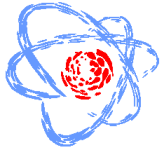Speaker
Ms
Martyna Wojciechowska
(University of Wroclaw)
Description
Ferroelectric crystals are import and basic materials for technological applications in capacitors, pyroelectric, and electrooptical devices. Their nonlinear characteristics were found to be very useful, for example, in optical second-harmonic generators and other nonlinear optical devices.[1] Much of the attention in this field has been focused on developing ferroelectric inorganic compounds such as KH2PO4 (KDP),[2] perovskite-type compounds (BaTiO3) and LiNbO3.[3] Recently, the molecule-based ferroelectrics, simple alkylammonium organic salts: diisopropylammonium chloride (DIPAC) and diisopropylammonium bromide (DIPAB) have been synthesized and characterized.[4,5] They undergo a reversible phase transition from a high temperature paraelectric phase (2/m) to a low temperature ferroelectric phase (2) at ca. 440 K and 425 K, respectively with the spontaneous polarization resulting from the ordering of the organic cations (order–disorder-type ferroelectric).
A particular behavior of their dielectric parameters (especially DIPAB) distinguishes them from the formerly reported organic, hydrogen-bonded ferroelectrics.[5,6] This compound is characterized by an extremely high value of the spontaneous polarization (23 μC cm^-2), a high Curie temperature (426 K), a high dielectric constant, small dielectric losses and a low coercivity field.[5,6] Additional qualities of DIPAB are: facility of preparation, low cost, nontoxicity, and good thermal stability. DIPAB also shows a strong piezoelectric effect and has a well defined ferroelectric domain structure.
Recently, we have synthesized and characterized the physicochemical properties of a novel biferroic material: diisobutylammonium bromide [i-(C4H9)2NH2][Br] (DIBAB) by thermal, electric and spectroscopic measurements.[7] DIBAB exhibits unique and unexpected properties related to ordering of chains of diisobutylammonium cations. It undergoes a strongly discontinuous phase transition (at 285/286 K, cooling/heating respectively) driven by an order–disorder mechanism strongly coupled to macroscopic deformation.
The polar properties of DIBAB in the low temperature phase have been studied by the pyroelectric current measurements. The spontaneous polarization was found to be reversible
in an external electric dc field (±6 kV cm^−1) and equals 5×10^−2 μC cm^-2. This corroborates the structural findings concerning the orientation of molecular permanent dipoles. The behavior of the spontaneous polarization also resembles that of a canted ferromagnetism.[8] The ferroelasticity in DIBAB was confirmed by the optical observation of the ferroelastic domains under polarizing microscope. The crystal shows a phase growth and a domain pattern resembling that of martensitic phase transitions. It is the most spectacular result of this work and the first example of martensitic transition in the organic compound.
This research was supported by the Ministry of Science and Higher Education (Poland) under grant no. IP 0356/IP2/2015/ 73 (A. Piecha-Bisiorek).
1. J. F. Scott, Science, 2007, 315, 954.
2. G. Busch and P. Scherrer, Naturwissenschaften, 1935, 23, 737.
3. Ferroelectrics and Related Substances, ed. Y. Shiozaki, E. Nakamura and T. Mitsui, Landolt–Bornstein New Series, Springer-Verlag, Berlin, 2006, vol. III/36.
4. D.-W. Fu, W. Zhang, H.-L. Cai, J.-Z. Ge, Y. Zhang, R.-G. Xiong, Adv. Mater. 2011, 23, 5658.
5. D.-W. Fu, H.-L. Cai, Y. Liu, Q. Ye, W. Zhang, Y. Zhang, X.-Y. Chen, G. Giovannetti, M. Capone, J. Li, R.-G. Xiong, Science 2013, 339, 425.
6. A. Piecha, A. Gągor, R. Jakubas, P. Szklarz, CrystEngComm 2013, 15, 940.
7.A. Piecha-Bisiorek, A. Białońska, R. Jakubas, P. Zieliński, M. Wojciechowska, M. Gałązka, Adv. Mater. 2015, 27, 5023.
8 L. Tauxe, J. Gee, H. Staudigel, J. Geophys. Res. 1998, 103, 17775.
Author
Ms
Martyna Wojciechowska
(University of Wroclaw)
Co-authors
Dr
Anna Piecha-Bisiorek
(University of Wrocław)
Prof.
Ryszard Jakubas
(University of Wrocław)

